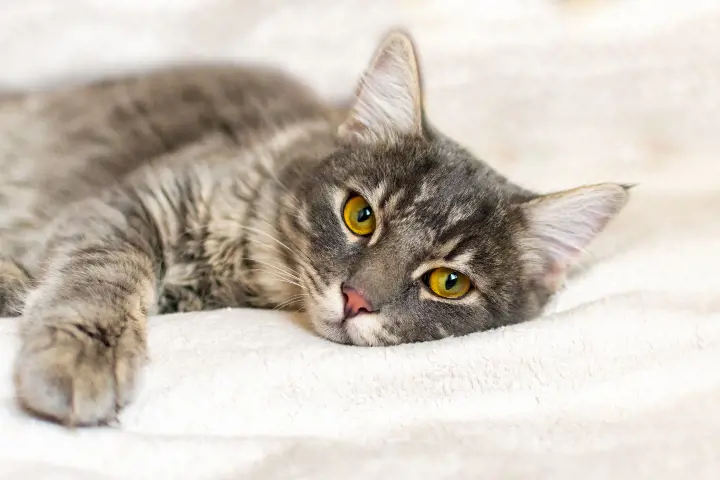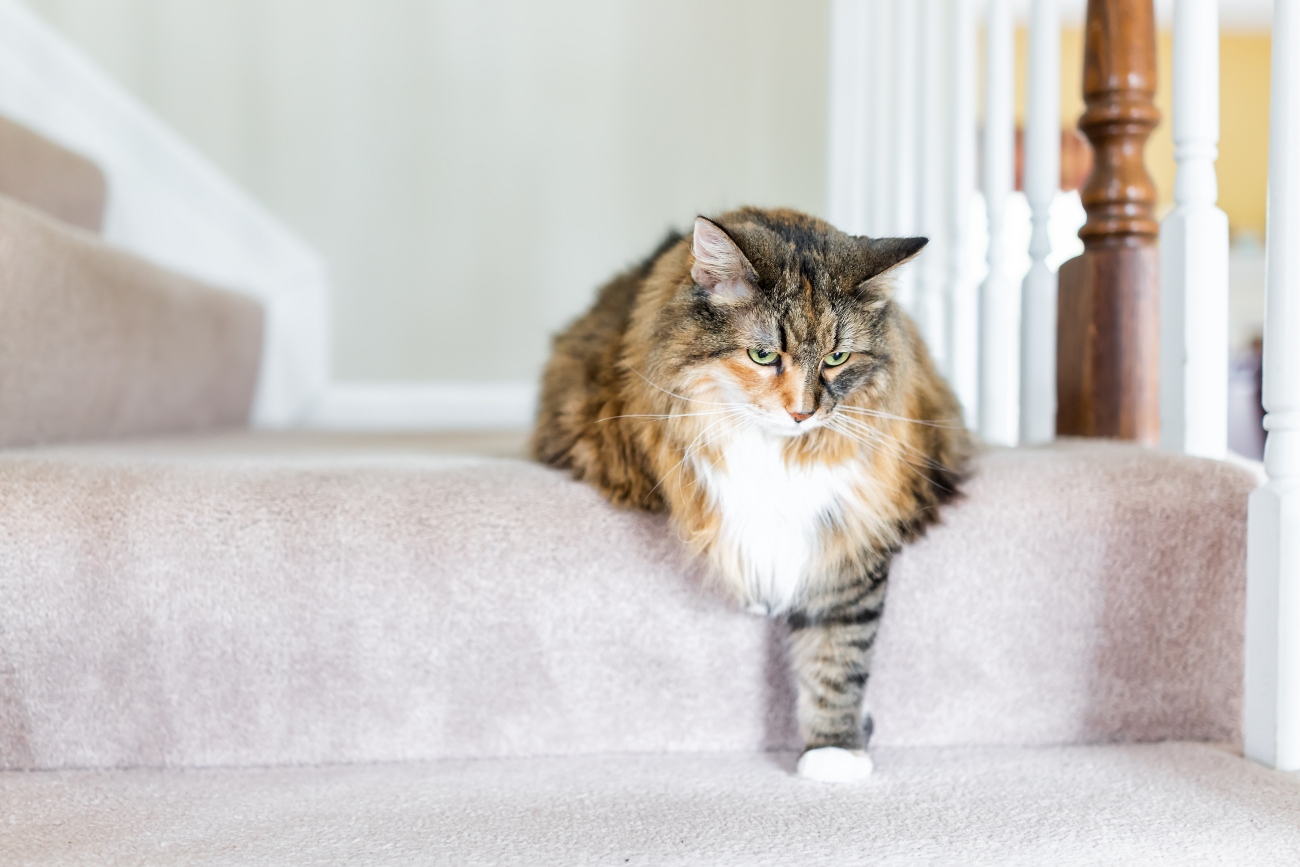How can I tell if my cat is in pain?
27th July, 2023

As a cat owner, you want to make sure that your furry friend is always healthy and happy. Unfortunately, cats are experts at hiding their pain, making it difficult for you to know when they're not feeling well. In this article, we'll explore how to tell if your cat is in pain, common causes of pain, and ways to relieve and manage your cat's pain.
Understanding cat behaviour
Before we dive into the signs of pain in cats, it's important to understand your cat's behaviour. Cats are known for being independent creatures, but they also rely on their owners for comfort and security. When cats are in pain, they may try to hide their discomfort or become more vocal and clingy than usual.
It's also important to note that cats are masters at masking their pain, which is why cat owners may want to be attentive to subtle changes in their behaviour.
Cats may also show signs of pain differently than dogs or humans, so it's essential to be aware of these differences.
Signs of pain in cats
As mentioned earlier, cats can be experts at hiding their pain, but there are some subtle signs that you can look out for.
Here are some common signs that your cat may be in pain:
Changes in behaviour
One of the most common signs of pain in cats is changes in their behaviour. If your cat is usually active and playful, but suddenly becomes lethargic or withdrawn, they may be in pain.
Cats in pain may also become more vocal, meowing, or crying more than usual or show uncharacteristic aggression.
Not sure if you've understood their behaviour correctly? Check out our article on understanding your cat's body language for more information.
Changes in eating and drinking habits
Cats in pain may also experience changes in their eating and drinking habits. They may lose their appetite or drink less water than usual. This may also lead to weight loss.
If you notice your cat has not eaten properly in a few days, you might consider having a veterinarian determine if there is underlying health problem causing the change in your cat's behaviour.
Changes in grooming habits
Cats are known for their grooming habits, but if your cat is in pain, they may groom themselves less frequently. This can lead to matted fur or skin irritation.
Posture and movement
Cats in pain may also show changes in their posture and movement. They may walk with a limp or have difficulty jumping onto furniture.
They may also have a hunched posture or be reluctant to move at all. You may also notice your cat making strange facial expressions, this could be a warning sign of a sick cat as well.
Common causes of pain in cats
Now that you know the signs of pain in cats, let's explore some common causes of pain.
Here are some of the most common reasons why your cat may be in pain:
Dental problems
Dental issues are one of the most common causes of pain in cats. Tooth pain and discomfort can be caused by:
- Dental disease
- Tooth decay
- Broken teeth
Common symptoms of dental disease include bad breath or a change in their behaviour or facial expression that may suggest a cat in pain.
Arthritis
Arthritis is a common condition in older cats and can cause pain and stiffness in their joints. This can lead to:
- Difficulty jumping
- Climbing
- Moving around
You may notice they no longer jump at all, as it's difficult for them to get the momentum.
Urinary tract infections
Urinary tract infections are a common health issue among cats.
Symptoms of a urinary tract infection in cats may include:
- Frequent urination
- Straining to urinate
- Blood in the urine
- Strong odour
If your cat is exhibiting any of these symptoms, it may be time to schedule a vet appointment for diagnosis and treatment. Treatment may involve antibiotics or other medications to help clear the infection.
You can help prevent urinary tract infections in cats by providing fresh water, feeding a high-quality diet, and keeping litter boxes clean.
Trauma
Trauma, such as being hit by a car or falling from a high place, can cause pain and injuries in cats.
This can range from mild cuts and bruises to more severe injuries like a broken bone.
Diabetes mellitus
Diabetes is a common health issue that many cats experience. Cats with diabetes may experience pain in their back legs due to nerve damage or neuropathy. This condition can cause weakness, wobbliness, and discomfort in the affected area.
Pain management for cats with diabetes may include pain medication, supplements, or alternative therapies such as acupuncture.
It is advisable to work closely with a vet to develop an effective treatment plan that addresses the underlying cause of the pain and improves the cat's quality of life.
- How to check for pain in cats: If you suspect that your cat is in pain, there are some ways to check for it. However, it's important to be gentle and cautious when examining your cat, as they may become agitated or scared if they're in pain.
- Observe your cat's behaviour: As mentioned earlier, changes in behaviour can be a sign of pain in cats. Keep an eye on your cat's behaviour and look for any obvious signs of discomfort or distress. What is their energy level? How is their appetite?
- Check your cat's body: Gently examine your cat's body for any signs of pain or discomfort. Look for swelling, bruises, cuts, or anything else that may be causing pain.
- Check your cat's mouth: If you suspect that your cat is experiencing dental pain, gently open their mouth and check for any signs of tooth decay, broken teeth, or gum inflammation.
Ways to relieve cat pain
If you suspect that your cat is in pain, there are some ways to relieve their discomfort. However, it's important to consult with your vet before administering any pain medications, as some prescription pain medications can be harmful to cats.
- Pain relief medication: Your vet may prescribe pain relief medication to help relieve your cat's pain. However, it's essential to follow the dosage instructions carefully and monitor your cat for any adverse reactions.
- Heat therapy: Heat therapy can help relieve pain and stiffness in cats with arthritis or other joint issues. You can use a warm compress or heating pad to provide gentle heat therapy to your cat.
- Massage: Gentle massage can help relieve pain and stiffness in cats with muscle or abdominal pain. However, it's important to be gentle and use light pressure when massaging your cat.
When to take your cat to the vet
If you suspect that your cat is in pain, it's advisable that they are taken to the vet immediately. Your vet can perform a thorough examination and determine the cause of your cat's pain. They can also provide treatment options and pain medications if necessary.
Treatment options for pain in cats
The treatment options for pain in cats will depend on the underlying cause of their pain. Here are some common treatment options:
Antibiotics
If your cat is experiencing pain due to an infection, your vet may prescribe antibiotics to help fight off the infection.
Surgery
If your cat has an injury or condition that requires surgery, your vet may recommend surgery to help alleviate their pain.
Pain relief medication
As mentioned earlier, your vet may prescribe pain relief medication to help relieve your cat's pain.
Cat pain management
If your cat is experiencing chronic pain, it's essential to develop a pain management plan with your vet. This may include medication, physical therapy, or other pain relief techniques.
Preventing pain in cats
Preventing pain in cats is essential to their overall health and wellbeing. Here are some ways to prevent pain in your cat:
- Regular check-ups: Scheduling a check-up with your vet can help detect any underlying conditions that may lead to pain.
- Dental care: Regular dental care, such as brushing your cat's teeth and providing dental treats, can help prevent dental pain and decay.
- Healthy diet: A healthy diet can help prevent obesity, which can lead to joint pain and other health issues.
Conclusion

In conclusion, it's essential to be attentive to your cat's behaviour and look out for any signs of pain. If you suspect that your cat is in pain, consult with your vet as soon as possible. With the right treatment and pain management plan, you can help your furry friend live a happy and pain-free life.
To get a cat insurance quote for your furry friend you can get a quote through our website by clicking here. If you have any questions, you can get in touch with our pet insurance team on 0330 102 5748.
Helpful Pages
Recent Posts

Why do Great Danes bury their heads?
12/03/25
Find out more about Beagles
28/02/25Pet Insurance Quote
- 98% claims paid *
- Claims paid directly to vets
- 24/7 vet video consultations
- Interest free monthly payments


